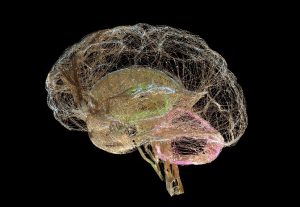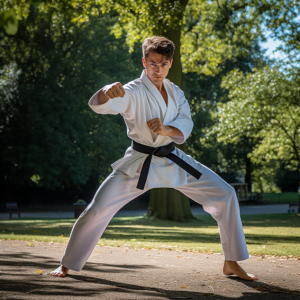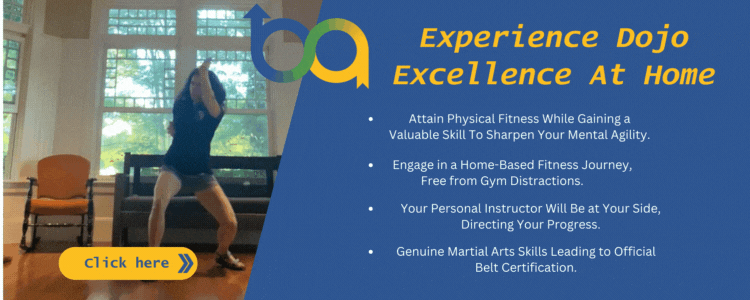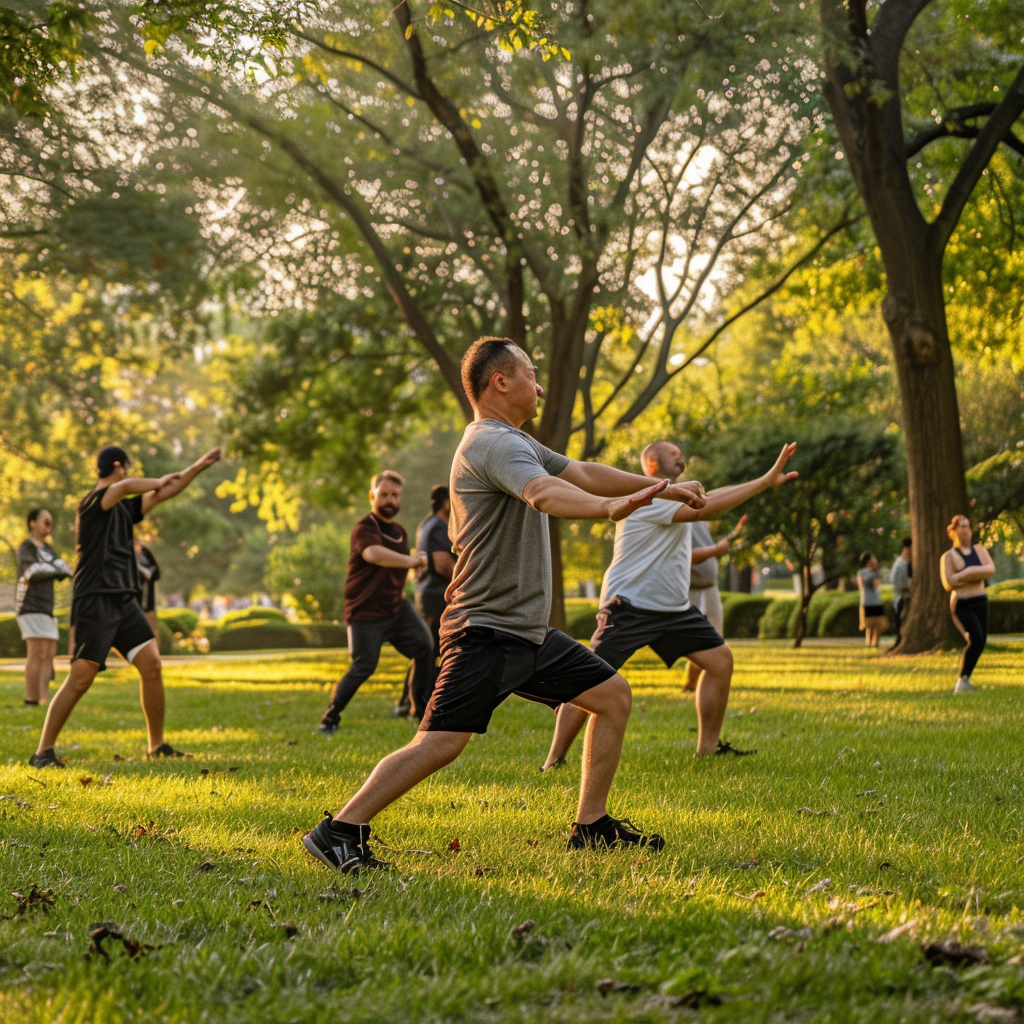 In a fast-paced environment where technology seems to dominate every aspect of our lives, finding a path to both physical and mental well-being is becoming increasingly vital.
In a fast-paced environment where technology seems to dominate every aspect of our lives, finding a path to both physical and mental well-being is becoming increasingly vital.
While gyms and social media fitness trends promise sculpted physiques and improved health, there exists a time-tested and more natural approach to physical fitness that not only tones the body but also nurtures the mind and spirit – martial arts.
Martial arts embodies the pursuit of the mastery of movement. From ancient traditions to contemporary disciplines, martial arts has captivated those who study it worldwide for its unparalleled capacity to forge formidable self-defense strategies while building increased physical fitness.
In addition to the fundamental punches and kicks, these intricate martial arts techniques and forms stand as a solid embodiment of self-discipline, resilience, and a lifelong pursuit of self-improvement. Whether you are an aspiring practitioner or merely curious about the benefits, this exploration into the realm of physical fitness will highlight the diverse and compelling advantages that martial arts offer.
Beyond the traditional exercise routines that you already know, let’s uncover the remarkable ways martial arts can transform your body, elevate your fitness levels, and ultimately, empower your entire being through body mechanics and muscle memory.
What is Body Mechanics/Muscle Memory?
One of the most profound benefits of practicing martial arts is the improvement of overall physical fitness, namely an increased use of body mechanics and muscle memory.
What exactly is body mechanics and muscle memory?
By definition, body mechanics is “a set of exercises designed to develop an individual’s coordination, strength, and stamina” (Dictionary.com, 2021). Complementary to body mechanics, muscle memory is defined as “the ability to repeat a specific muscular movement with improved efficiency and accuracy that is acquired through practice and repetition” (Merriam Webster, 2021). Essentially, the consistent practice of body mechanics results in improved muscle memory.
So how do we apply these concepts to experience the physical benefits of practicing martial arts?
Let’s start with the basics, and first dissect exactly what a fundamental strike consists of. Within this strike, each movement is made up of several micro-movements: for example, the movement of a simple backhand consists of multiple muscles flexing and bending ranging from your heels to your fingertips to eventually strike the target in a controlled motion. (More complicated than you thought, right?)
Since each part of a strike, technique, or form requires intense attention to these micro-movements, it’s an effective way to increase your body mechanics. We know that as a student progresses in the study of martial arts, their “coordination, strength, and stamina” improve.
While practicing, you are executing a combination of these dynamic movements that engage various muscle groups. This resistance and controlled effort will build your physical strength.
Engaging these different muscle groups in your body during practice provides more body mechanics benefits, too.
- Isometric Contractions: Many stances and positions require holding static postures, which lead to isometric contractions. Isometric exercises build muscular endurance and strength, particularly in the lower body.
- Dynamic Movements: Explosive techniques, such as jumps and kicks, require significant muscular power, leading to strength development in the legs and core.
- Training with Resistance: Don’t forget that your body provides its own resistance, too. Holding a position engages different muscle groups and as you move through the technique or form, you create your own version of natural strength training exercises.
- Core Strength: The emphasis on stability and balance in martial arts necessitates a strong core. As practitioners stabilize their bodies during movements, they develop a robust and stable core, crucial for many techniques.
By diligently rehearsing these intricate sequences of movements, martial artists fine-tune their body mechanics to achieve unparalleled precision and control.
In addition, improved body mechanics lead to benefits outside of martial arts as well. You’ll attain better posture, balance, and overall physical health, reducing the risk of injuries in everyday activities.
As you continuously practice your fundamentals, techniques, and forms, your body mechanics will strengthen, and you will be able to begin working towards building a solid muscle memory.
 Muscle memory is another foundational aspect of martial arts training. It allows practitioners to internalize movements, enhance their skills, and perform with confidence and accuracy.
Muscle memory is another foundational aspect of martial arts training. It allows practitioners to internalize movements, enhance their skills, and perform with confidence and accuracy.
Through consistent practice and repetition, martial artists can develop muscle memory that becomes second nature, elevating their overall performance and proficiency.
So, what exactly does muscle memory do for someone who practices martial arts?
- Retention and Recall: Perhaps the biggest advantage to a strong muscle memory is retention and recall. Regular practice strengthens muscle memory, making it easier for practitioners to recall sequence. This retention ensures that the techniques remain accessible even after extended periods of time without practice.
- Precision and Consistency/Refinement: Martial arts requires precise and consistent execution of movements, as we mentioned before. Through practice, muscle memory helps practitioners achieve the correct alignment, timing, and technique, leading to more accurate, refined, and polished performances with less mental bandwidth to accomplish it.
- Increased Speed: With muscle memory, practitioners can execute techniques at a faster pace. Instead of relying on conscious thought for each movement, their bodies remember the sequence, allowing them to react quickly and effectively during sparring or self-defense situations.
- Reduced Mental Load: Learning and performing martial arts can be mentally demanding, especially for beginners. As muscle memory takes over, it frees up mental resources that can be better utilized to focus on other aspects of training, such as strategy, footwork, or reading an opponent’s movements.
- Stress Management: In high-pressure situations, such as competitions or self-defense scenarios, the body’s natural response might be to tense up. Muscle memory helps overcome this by allowing practitioners to rely on well-practiced techniques, even under stress, leading to more effective and controlled responses.
As these repeated movements are etched into the neural pathways of the muscles to create muscle memory, an intense fusion of the body and mind takes place. Techniques once learned through conscious focus are now effortlessly executed, allowing practitioners to unleash their abilities without hesitation. In combat or in practice, muscle memory empowers them to respond instinctively, even amid chaos or distraction.
Muscle memory is a foundational aspect of martial arts training. It allows practitioners to internalize movements, enhance their skills, and perform with confidence and accuracy. Through consistent practice and repetition, martial artists can develop muscle memory that becomes second nature, elevating their overall performance and proficiency.
 The significance of practicing fundamentals, techniques, and forms cannot be overstated, as it serves as a powerful catalyst for mastering body mechanics and developing muscle memory. Practicing martial arts challenges the body in a comprehensive and balanced way, leading to improved coordination, strength, and overall physical fitness.
The significance of practicing fundamentals, techniques, and forms cannot be overstated, as it serves as a powerful catalyst for mastering body mechanics and developing muscle memory. Practicing martial arts challenges the body in a comprehensive and balanced way, leading to improved coordination, strength, and overall physical fitness.
The journey of martial arts epitomizes the pursuit of excellence and the never-ending martial artists’ desire for self-improvement. It requires unwavering dedication, perseverance, and a profound understanding of oneself. As practitioners begin the journey of improving their body mechanics and muscle memory, they will not only refine their techniques but also discover an inner strength and resilience that will carry over beyond the mat.
The practice of martial arts is a gateway to honing body mechanics and developing muscle memory, uniting the physical and mental realms into a seamless and powerful force. Beyond the physical benefits, practicing fundamentals, techniques, and forms instills discipline, patience, and perseverance—values that extend beyond the realm of martial arts. It becomes a journey of self-discovery, self-improvement, and personal growth.
In the world of martial arts, practice is a gateway to unlocking the full potential of the human body and mind. It is a testament to the incredible capabilities of the human form and the transformative power of dedicated training. By delving into the intricacies of martial arts, practitioners can pursue excellence in both the art and science of this discipline, honing their skills and understanding to achieve profound expertise.
References:
Definition of Body Mechanics. Dictionary.com. (2021, October). Retrieved from www.dictionary.com.
Definition of Muscle Memory. Merriam Webster. (2021, October). Retrieved from www.merriam-webster.com






